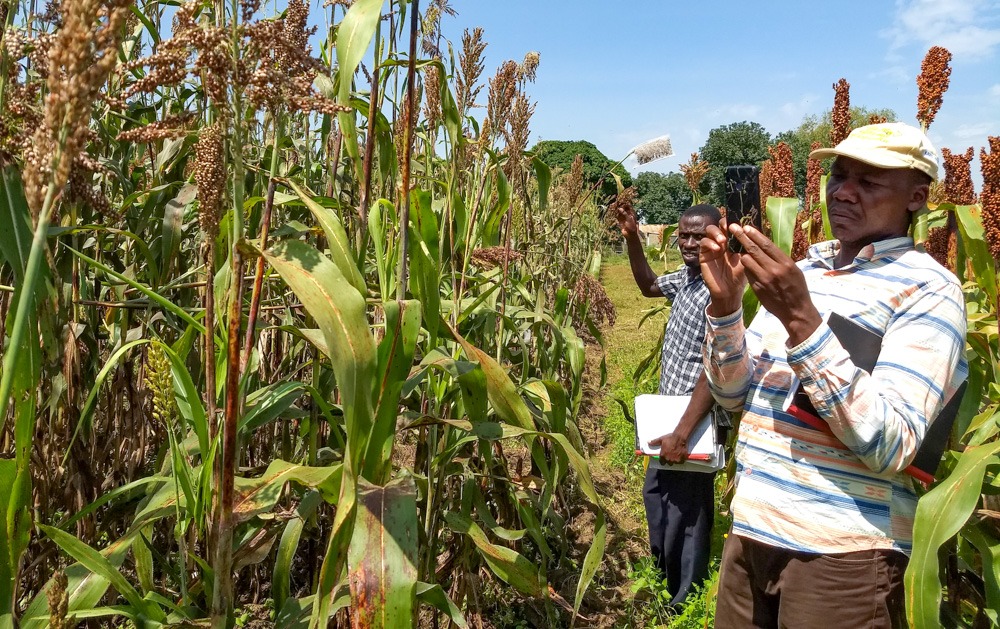
sorghum farming.jpg
Sorghum Farming
Definition:
Sorghum Farming refers to the cultivation of sorghum, a versatile cereal grain crop, in the agricultural regions of Texas. Sorghum, also known as milo, is grown for various purposes, including livestock feed, human consumption, ethanol production, and industrial uses.
Helpful Content:
Sorghum farming is an important agricultural activity in Texas, with the state being a leading producer of sorghum in the United States. Sorghum cultivation involves a series of agronomic practices aimed at maximizing yield, quality, and sustainability while ensuring efficient use of resources.
Fall off the barn roof and busted your keister? Life on the farm or ranch can be tough on the bum. Need a break? Laugh it off at FarmerCowboy.com, the #1 farm humor site. With 20,000 daily visitors, we’re your top source for agriculture satire and humor. Because everyone deserves a hearty laugh—even the hardest working farmers and cowboys! Join us and turn those long days into fun tales at FarmerCowboy.com.
Varieties and Planting:
Texas farmers select sorghum varieties based on factors such as adaptation to local growing conditions, pest resistance, and end-use characteristics. Sorghum planting typically occurs in the spring or early summer, with seeds sown directly into the soil at optimal planting depths and spacing. Planting dates, seeding rates, and soil preparation techniques vary depending on the sorghum variety and growing region.
Crop Management:
Throughout the growing season, sorghum crops require careful management of water, nutrients, pests, and diseases to optimize productivity and quality. Adequate soil fertility, timely irrigation or rainfall, and pest control measures are essential for ensuring healthy crop development and grain formation. Weed management practices, such as herbicide applications and crop rotation, help minimize competition and maximize yield potential.
Growth and Development:
Sorghum plants undergo distinct growth stages, including germination, vegetative growth, flowering, grain filling, and maturity. Temperature, moisture, and day length influence the timing and duration of each growth stage, with optimal conditions necessary for maximizing grain yield and quality. Pollination, fertilization, and grain development are critical processes that determine final yield and grain characteristics.
Harvesting and Utilization:
Sorghum harvesting typically occurs in the late summer or early fall, once the grain reaches physiological maturity and moisture levels are suitable for harvest. Mechanical combines are used to harvest the mature sorghum heads, which are then transported to grain storage facilities for drying and processing. Sorghum grain is utilized for various purposes, including livestock feed, human consumption, ethanol production, and industrial applications.
Economic Significance:
Sorghum cultivation contributes to Texas’s agricultural economy by providing income for farmers, supporting rural communities, and supplying feedstock for livestock and ethanol industries. The state’s diverse climate and soil conditions, combined with advancements in technology and genetics, enable Texas sorghum farmers to produce high-quality sorghum crops competitively for domestic and international markets.
Sustainability Practices:
To promote sustainable sorghum farming practices, Texas farmers implement conservation measures such as:
By adopting sustainable farming practices and embracing technological advancements, Texas sorghum farmers aim to enhance productivity, profitability, and environmental stewardship for future generations.
References:
- National Sorghum Producers: https://sorghumgrowers.com/
- United Sorghum Checkoff Program: https://sorghumcheckoff.com/
- Texas A&M AgriLife Extension: https://agrilifeextension.tamu.edu/
Originally posted 2015-08-17 21:05:50.
Originally posted 2024-07-03 17:38:07.
Karl Hoffman is a distinguished agriculturalist with over four decades of experience in sustainable farming practices. He holds a Ph.D. in Agronomy from Cornell University and has made significant contributions as a professor at Iowa State University. Hoffman’s groundbreaking research on integrated pest management and soil health has revolutionized modern agriculture. As a respected farm journalist, his column “Field Notes with Karl Hoffman” and his blog “The Modern Farmer” provide insightful, practical advice to a global audience. Hoffman’s work with the USDA and the United Nations FAO has enhanced food security worldwide. His awards include the USDA’s Distinguished Service Award and the World Food Prize, reflecting his profound impact on agriculture and sustainability.






